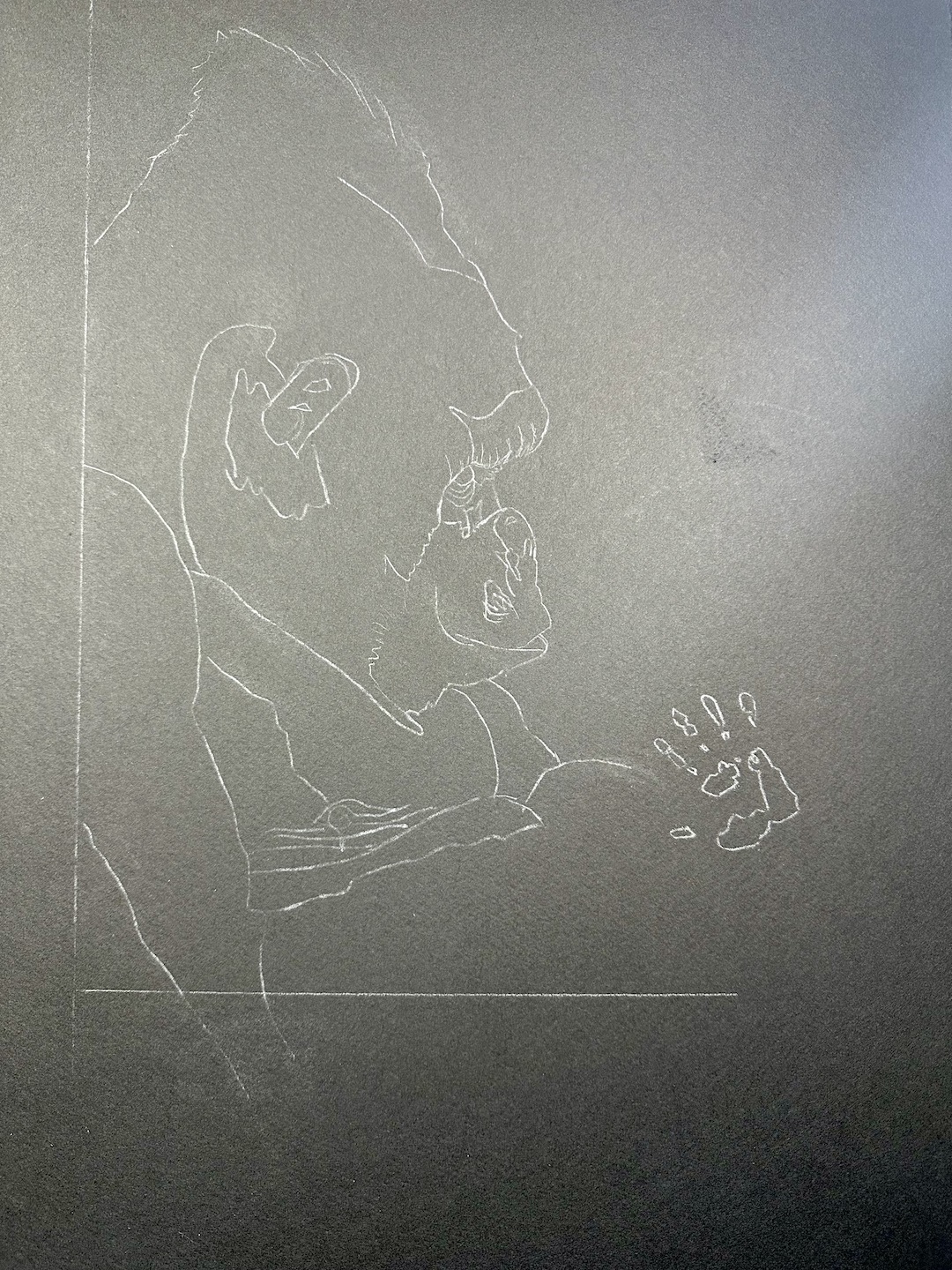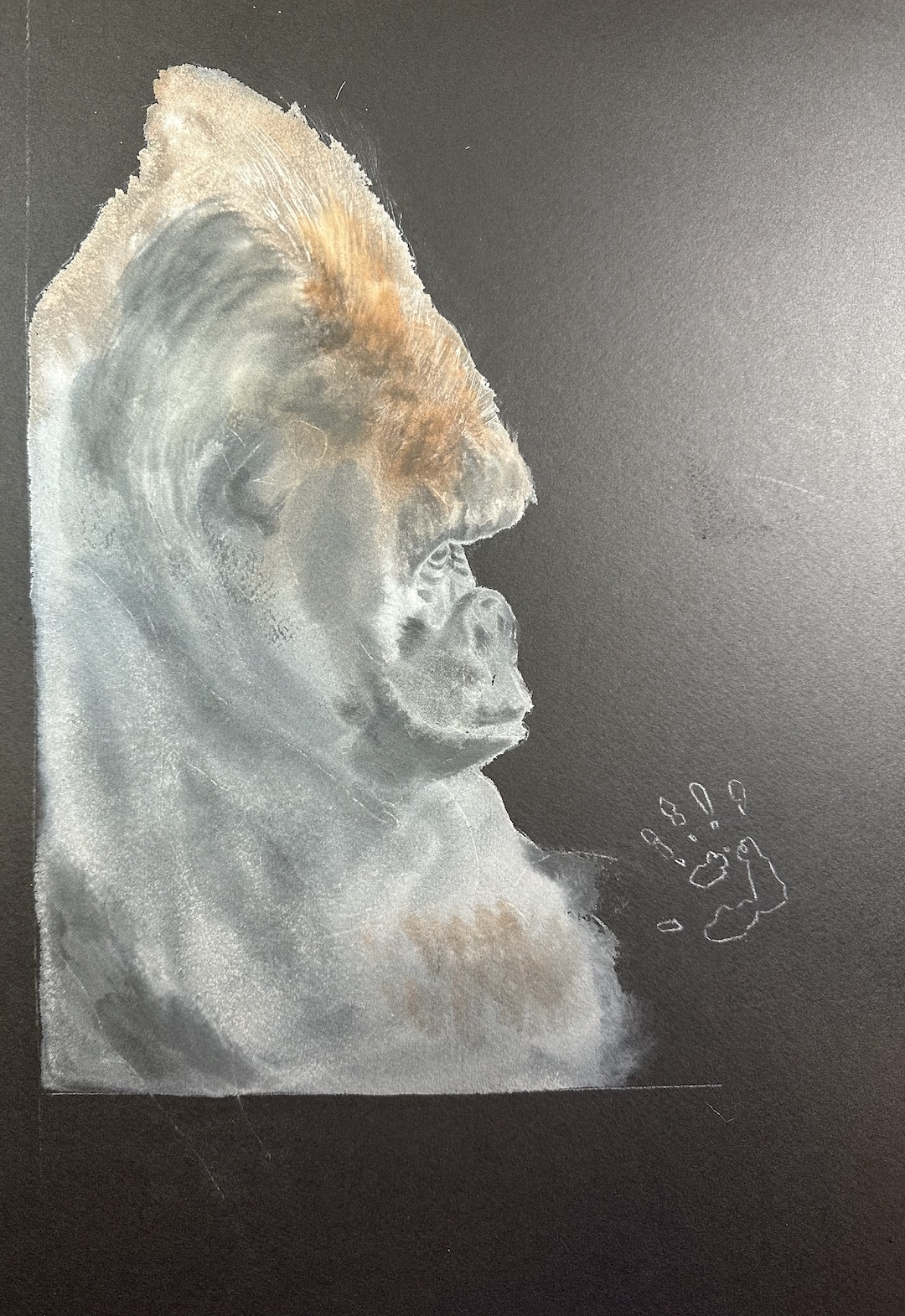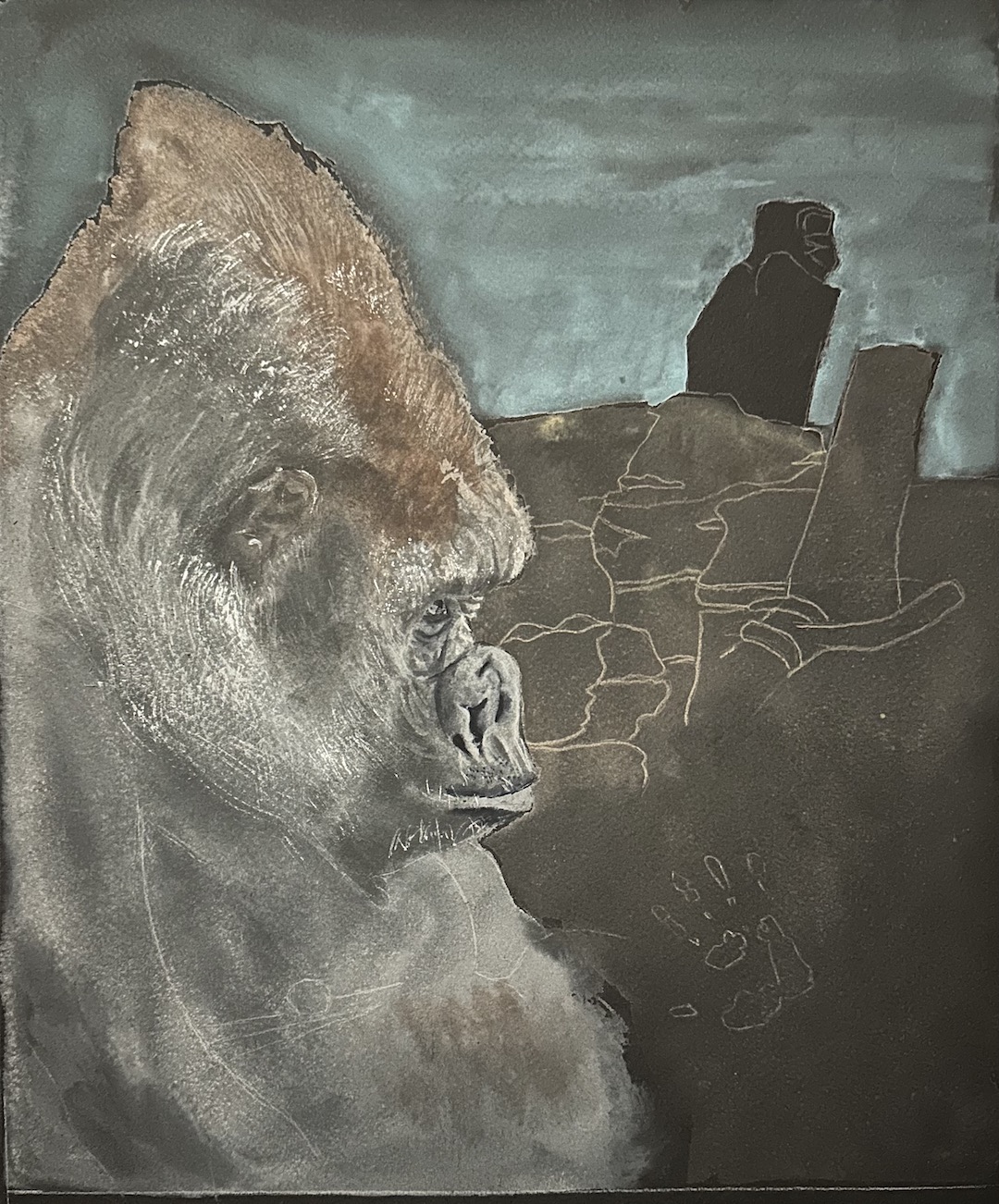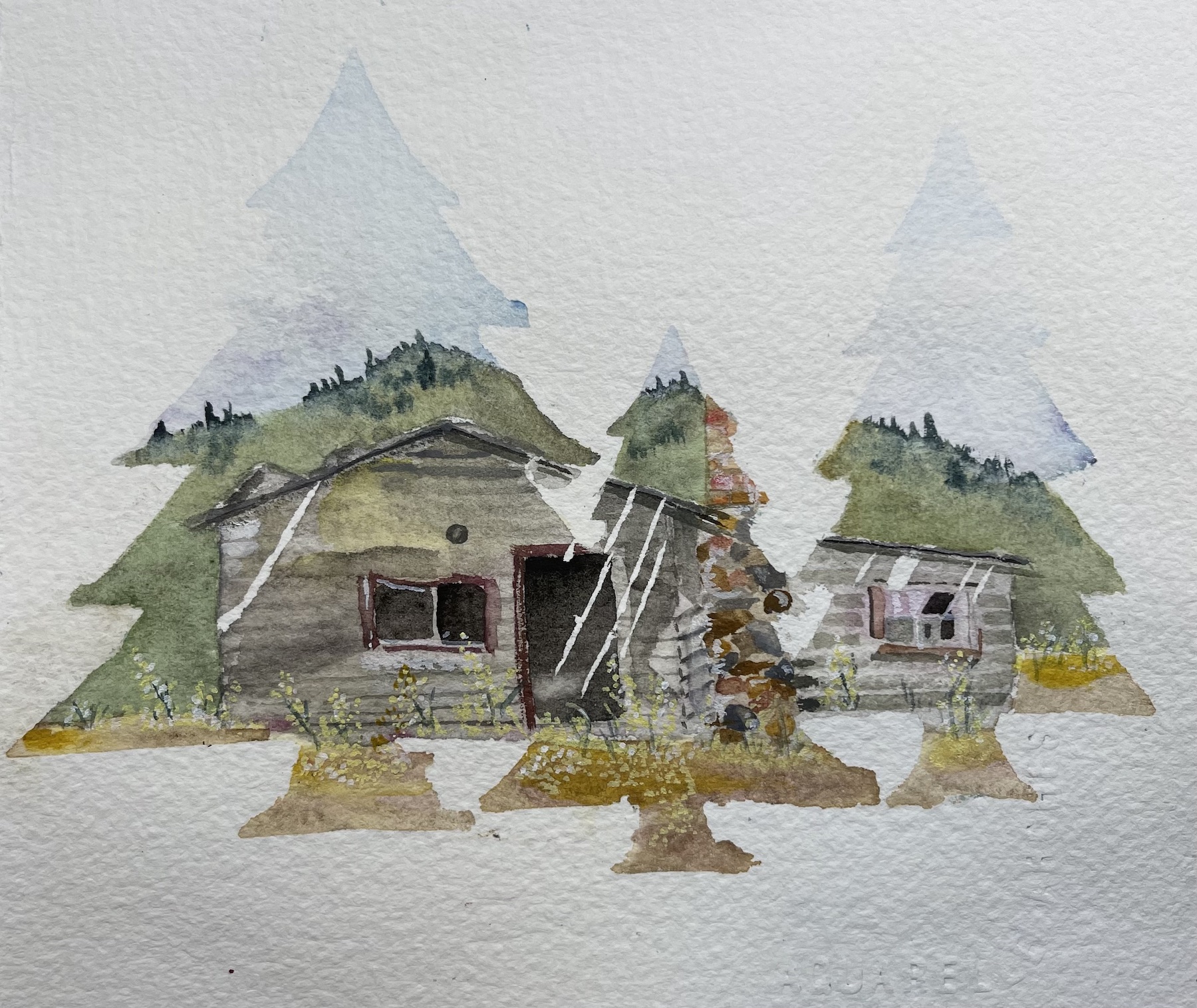


Boundaries
I belong to the Madison Watercolor Society, and our group decided to have a theme challenge for our August meeting. The theme selected was “Borders and Boundaries”.
In July, my husband and I traveled to Minnesota, and went to the Como Zoo and Conservatory, which is a fabulous space to visit! The conservatory was established in the late 1800’s with many exotic plants and exhibits.
In the zoo section, we went into the gorilla area and saw this forlorn gorilla sitting in a corner, next to the glass partition. He was beautiful, and I felt sorry for him as I’m sure he’d rather be free and in the wild.
I decided to use the photo I took of him as a reference for my painting. I wanted to show boundaries, so I included a hand print on the glass and a slight reflection of a person in the glass.

Sketch
At first, I was going to include the ledge under the glass in the painting. And the handprint I added was a bit on the small side. I really didn’t know what to use for the background when I first started. This was a good candidate to use Black Stonehenge Aqua watercolor paper.

Gorilla
I concentrated on doing the gorilla first, as it was important for me to get him right. I used a fan brush to paint most of his fur, both dotting it and then using long strokes to fill it in.

Changes
I added a smaller gorilla in the background, along with some rocks and a log. I tried to paint a reflection in the glass, but it was not working out.

Finished!
There is still a bit of the person reflection I tried, and I like that! I made the handprint much larger. This was a really fun one to work on.

Process
I have been asked how I create my Cookie Cutter paintings, so thought I would include the process here:
Once I find a good combination of cookie cutter and image, I make a paper cutout of the cookie cutter, often enlarging it a bit, out of heavy construction paper. I put a bit of tape on the back of the paper and stick it to my watercolor paper. Then, I go around the construction paper with masking fluid (1). Once the masking fluid is dry, I sketch the image inside the cookie cutter shape. With the masking fluid still on I start to paint, usually putting down a light wash so I will know where the outline of the cookie cutter is (2). Once I know I’ll be able to see where the outline is, I remove the masking fluid and them complete the painting (3).

1

2
